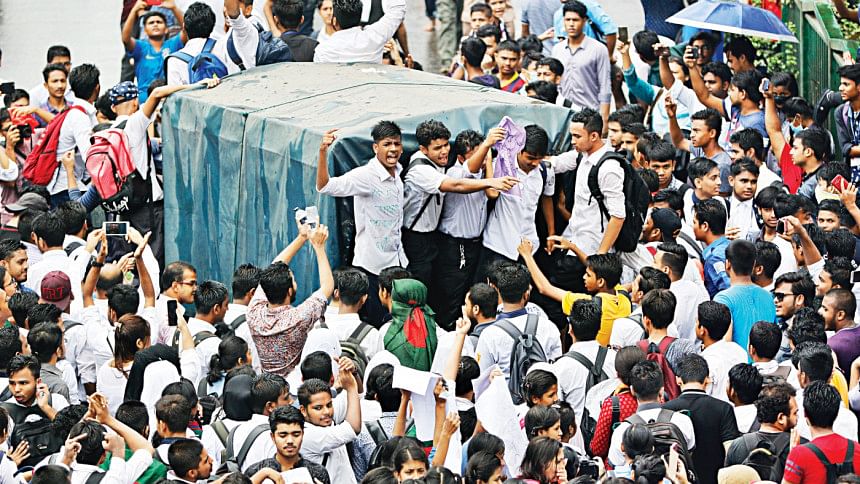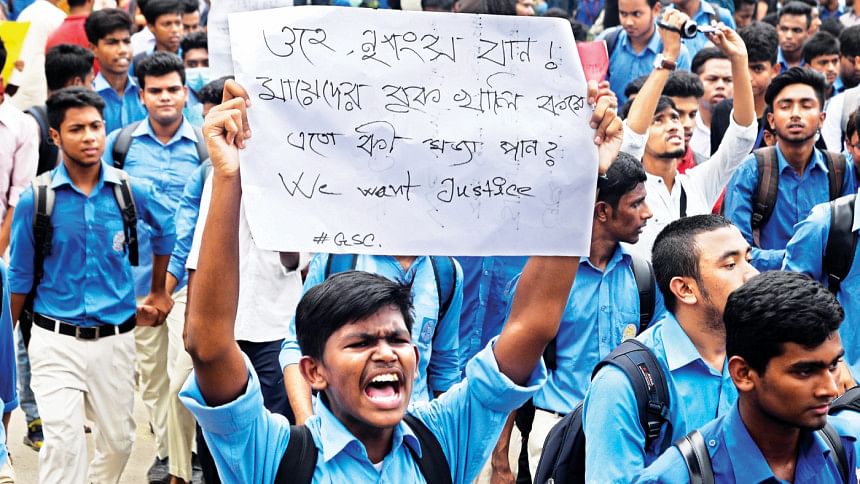Road Safety Movement 2018: Was it worthwhile?

Two years ago, a speeding bus lost control and killed two teenagers and injured nine others in Dhaka. As a result, thousands of school students protested on the streets, demanding safer roads.University students soon joined the protests, and the police cracked down on the demonstrators.
According to a January 2019 report in The Daily Star, around 7,221 people died in road accidents, while 1,5446 people were injured in 2018. More recently, mountaineer Reshma Nahar Ratna, who was riding a bicycle, was killed when a microbus hit her on Lake Road, adjacent to Chandrima Udyan. As such tragic accidents continue to increase across the country, the students are left to wonder – were their efforts during the road safety movement worthwhile?
When the movement began, slogans, videos and photos went viral on social media, with the hashtags, #RoadSafetyMovement and #WeWantJustice. "Technology helped us to spread the word, and made things easier on the grounds. We notified people about any updates or changes through social media and live videos on Facebook kept people engaged with the protests," shared Anika Haque Annanya, an active participant of the movement and a student of Viqarunnisa Noon School and College. People across the nation expressed solidarity with the protestors, on social media.

During the protests, students as young as 13, unaffiliated with any political agenda, stopped vehicles to check for license and registration and turned back vehicles travelling on the wrong side of the road to avoid traffic, a common practice in the country. They even kept an emergency lane for ambulances.
The government consented to the demands of the protestors, approving the draft of the Road Transport Act 2018, that proposed a maximum punishment of five years' imprisonment for causing deaths by reckless driving. The police implemented a nationwide Traffic Week that began on August 5, 2018, holding drivers fully accountable for traffic violations. "Since the protests, the roads have been improved, the number of foot over bridges have increased and most importantly, public awareness has spiked," said Sarzil Hasib, a student of Ahsanullah University of Science and Technology.
However, different transport owners and workers protested several sections of the Road Transport Act, after it came into effect on November 1, 2019 – without enacting the rules. Their protests forced the government to relax several sections of the act till June this year.
"I don't know the extent to which the demands have been actually put into action, but the movement served as a beacon of hope. It suggested that our generation will always stand against injustices, and that we care about good policies and public services," added Tiasha Idrak, a student of University of Dhaka.Even though this unprecedented movement led to necessary conversations and some changes, theaccomplishments of those changes is yet to be fully realised.
Several educational institutions also planned to conduct interactive classes, on-school activities and regular workshops on the importance of road safety. However, nothing really changed after the movement lost its momentum.
The increasing number of road accidents and the irregularities in the system have challenged the confidence of the protestors. Two years after the movement, the youths are still hoping that every resident of Bangladesh feels safe on the roads while travelling and that the authorities take cautious steps regarding road safety.

 For all latest news, follow The Daily Star's Google News channel.
For all latest news, follow The Daily Star's Google News channel. 



Comments